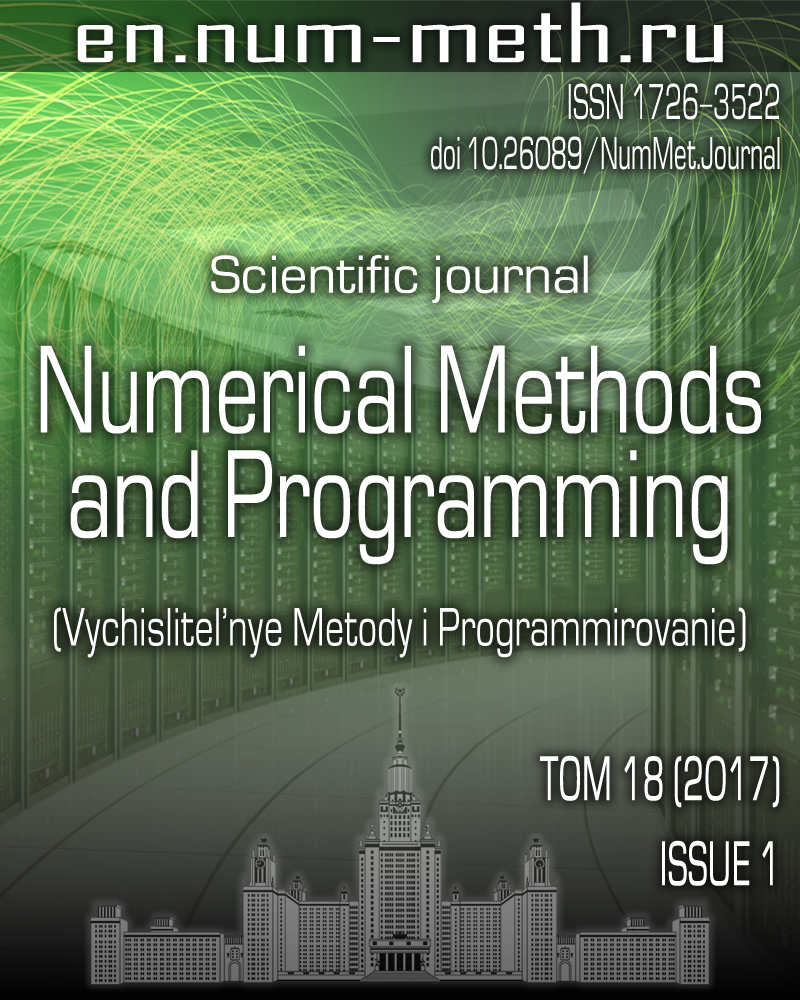Computer synthesis of diffractive optical elements for forming 3D images
DOI:
https://doi.org/10.26089/NumMet.v18r102Keywords:
nano-optical elements, flat computer optics, electron beam lithography, security label verificationAbstract
A method is proposed to compute and synthesize the microrelief of a diffractive optical element to produce a new visual security feature: alternation of two 3D color images when the diffractive element is rotated by 90 degrees. Effective algorithms for computing the micro-relief of an optical element are developed. Optimal parameters of the diffractive optical element are determined using methods of mathematical modeling. Sample optical security elements that produce 3D to 3D visual switch effect when illuminated by white light were manufactured using the electron-beam lithography. The optical elements developed can be replicated using a standard equipment employed for manufacturing security holograms. The new optical security feature is easy to control visually, safely protected against counterfeit, and designed to protect banknotes, documents, ID cards, etc.
References
- G. Saxby, Practical Holography (CRC Press, Boca Raton, 2003).
- F. S. Davis, Holographic Image Conversion Method for Making a Controlled Holographic Grating.US. Patent No. 5, 262, 879 (16 November 1993).
- P. Rai-Choudhury (Ed.), Handbook of Microlithography, Micromachining, and Microfabrication , Vol. 1: Microlithography (SPIE Press, Bellingham, 1997).
- Z. Zhou and S. H. Lee, “Two-Beam-Current Method for E-Beam Writing Gray-Scale Masks and Its Application to High-Resolution Microstructures,” Appl. Opt. 47 (17), 3177-3184 (2008).
- T. Shiono, T. Hamamoto, and K. Takahara, “High-Efficiency Blazed Diffractive Optical Elements for the Violet Wavelength Fabricated by Electron-Beam Lithography,” Appl. Opt. 41 (13), 2390-2393 (2002).
- A. Goncharsky, A. Goncharsky, and S. Durlevich, “Diffractive Optical Element with Asymmetric Microrelief for Creating Visual Security Features,” Opt. Express 23 (22). 29184-29192 (2015).
- A. N. Tikhonov, “Solution of Incorrectly Formulated Problems and the Regularization Method,” Dokl. Akad. Nauk SSSR 151 (3), 501-504 (1963) [Sov. Math. Dokl. 5 (4), 1035-1038 (1963)].
- A. N. Tikhonov, A. V. Goncharsky, V. V. Stepanov, and A. G. Yagola, Numerical Methods for the Solution of Ill-Posed Problems (Kluwer, Dordrecht, 1995).
- A. Bakushinsky and A. Goncharsky, Ill-Posed Problems: Theory and Applications (Kluwer, Dordrecht, 1994).
- T. Yatagai, “Stereoscopic Approach to 3-D Display Using Computer-Generated Holograms,” Appl. Opt. 15 (11), 2722-2729 (1976).
- Y. Takaki and K. Taira, “Speckle Regularization and Miniaturization of Computer-Generated Holographic Stereograms,” Opt. Express 24 (6), 6328-6340 (2016).
- R. L. van Renesse, Optical Document Security (Artech House, Boston, 2005).
- A. V. Goncharsky and A. A. Goncharsky, Computer Optics and Computer Holography (Mosk. Gos. Univ., Moscow, 2004) [in Russian].
- L. I. Goray and G. Schmidt, “Solving Conical Diffraction Grating Problems with Integral Equations,” J. Opt. Soc. Am. A 27 (3), 585-597 (2010).
- E. Popov (Ed.), Gratings: Theory and Numeric Applications (Institut Fresnel, Marseille, 2014).
Downloads
Published
How to Cite
Issue
Section
License
Copyright (c) 2017 Вычислительные методы и программирование

This work is licensed under a Creative Commons Attribution 4.0 International License.

